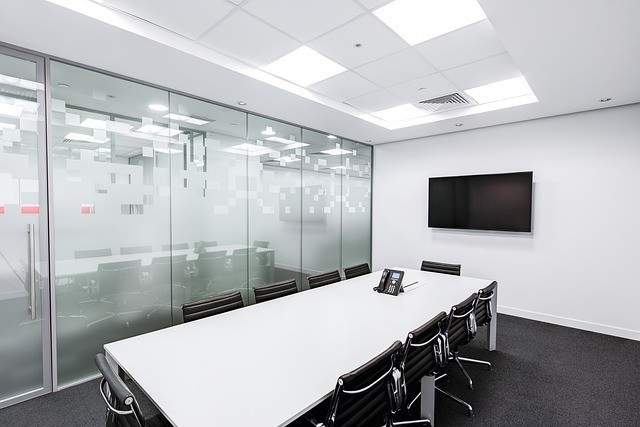By Young Entrepreneur Council,
No one likes to open up their calendar to find their day booked solid with back-to-back meetings. These 11 hacks could lighten your load.
From weekly all-company meetings to daily check-ins with your team members, scheduled meetings can easily overwhelm any entrepreneur's schedule. At worst, they can become unproductive time-wasters for everyone at the team. Finding new ways to hold fewer more effective meetings is critical as your company grows.
Twelve members of Young Entrepreneur Council (YEC) share which trick they've found help make meetings more streamlined and manageable.
1. Set a kitchen timer for 30 minutes.
Most meetings don't need more than a half hour. Exchange pleasantries later; people have work to do. When the time is up, the meeting is over. If you didn't accomplish your goal you'll plan accordingly next time, won't you? If the leader of the meeting lets everyone know what the meeting is about and the expectations in advance, it ensures everyone has time to think about the meeting and come prepared.--Ryan Stephens, Ryan Stephens Marketing
2. Always send out an agenda.
Send out an agenda prior to the meeting. Make two things clear: how long the meeting will run and what topic(s) it will cover -- and stick to both. When everyone knows ahead of time what topic(s) will be discussed and how long there is to discuss them, you will have a much more productive block of time.--Jonathan Long, Market Domination Media
3. Plan out five bullet points -- and stick to them.
Whenever I conduct meetings, I try to write down five bullet points of items I need to cover, and make a plan to stick to them. If I have time, I'll make an agenda with these bullet points and share them with everyone on the call. I can't tell you how many meetings have grown to be confusing, chaotic messes because people veer off topic and introduce items that aren't relevant to the majority of the people on the call. I stick to my 5 bullet point rule because any less than that is really more of a problem that can be settled over the phone, and anything more than that should be allocated into more than one meeting.--Rob Fulton, Audio Luminaries
4. "Park" certain conversations for later so you don't get sidetracked.
During the course of any meeting it's easy to go off on tangents. Those tangents aren't always bad -- good meetings and conversations stimulate new ideas and bring up valid points. To make sure you still achieve your meeting's immediate objectives, if you notice things going off topic, allow them to be discussed briefly then "park" that tangent for discussion at the end of the meeting or for a separate meeting entirely. Too much rigidity can stifle creativity and ideas; too little and it turns into a brainstorming sessions versus a productive meeting. This hack works well to keep the balance. -Patrick Linton, Bolton Remote
5. Stand up.
Have your meetings standing, instead of sitting. It is easy for people to sit down, get on a laptop and space out, which makes meetings last longer and feel less productive. When people are standing they focus on the topic at hand, which makes meetings go faster.--Derek Labian, MediaFire
6. Only use meeting time for decision-making.
Information-gathering should always be performed prior to meetings. Ask your stakeholders questions via email or automated feedback software and bring the responses to the meetings. When everyone is already informed, the team can debate important issues and create a clear plan of action instead of wasting precious time just bringing everyone up to speed.--David Hassell, 15Five
7. Try walking meetings.
A great way to make a meeting healthier and more enjoyable is to have a walking meeting. This way you get to leave the office and enjoy the scenery while discussing key action items. Meetings then go from being a chore to being something people actually look forward to.--Randy Rayess,VenturePact
8. Always announce a "hard stop" upfront and use 25-minute blocks instead of 30.
I set my Google Calendar to schedule meetings in 25-minute increments instead of 30. That means, on average, I'm being 17 percent more efficient with my time, having 50-minute meetings instead of 60, and shaving off 5 minutes from every half-hour meeting. On any conference call or meeting with three or more people, I start each meeting by saying, "I have a hard stop at [insert end time here], so thanks in advance to everyone for staying on-topic!" This establishes upfront that it's important to stick to an agenda to respect everyone's time.--Brittany Hodak, ZinePak
9. Cover your bases by gathering questions early.
I love handing out pieces of paper to people in meetings and asking them to write down what they want to discuss. Then I'll glance at their papers and try to group the answers into a few categories. This ensures that everyone at the meeting is satisfied with the topics covered and doesn't feel weird trying to find a way to bring up a topic.--Kumar Arora, Aroridex, Ltd.
10. Consider opposing thoughts.
I always take another member of my team -- a person who has a different perspective than me -- to meetings. I believe that this balance of thought leads to better long-term decision making.--Mina Chang, Linking the World
11. Switch up your environment.
Changing the location of your meetings each time you come together not only keeps things exciting, but also stimulates new ideas and innovation. Take the team outside, out to lunch for the meeting, into the conference room or even into your own office, and you will see less yawning and more interesting and invested conversation. If your meeting is simply being utilized to go over a few new things, don't waste your time making a formal gathering of the entire company. Grab the few specific individuals you need and take a walk outside or around your building, and change things up a bit.--Miles Jennings, Recruiter.com

